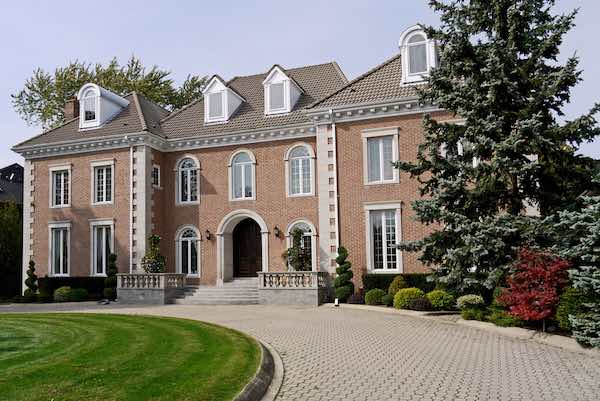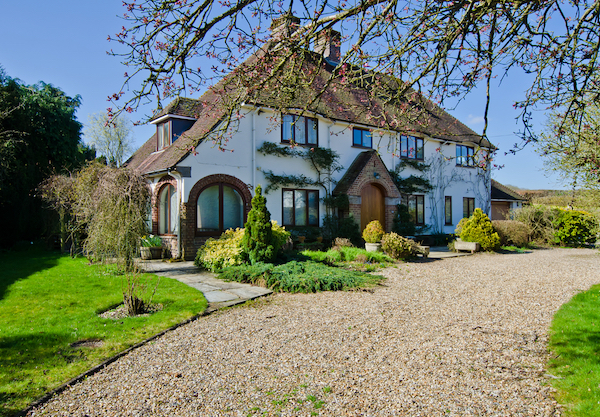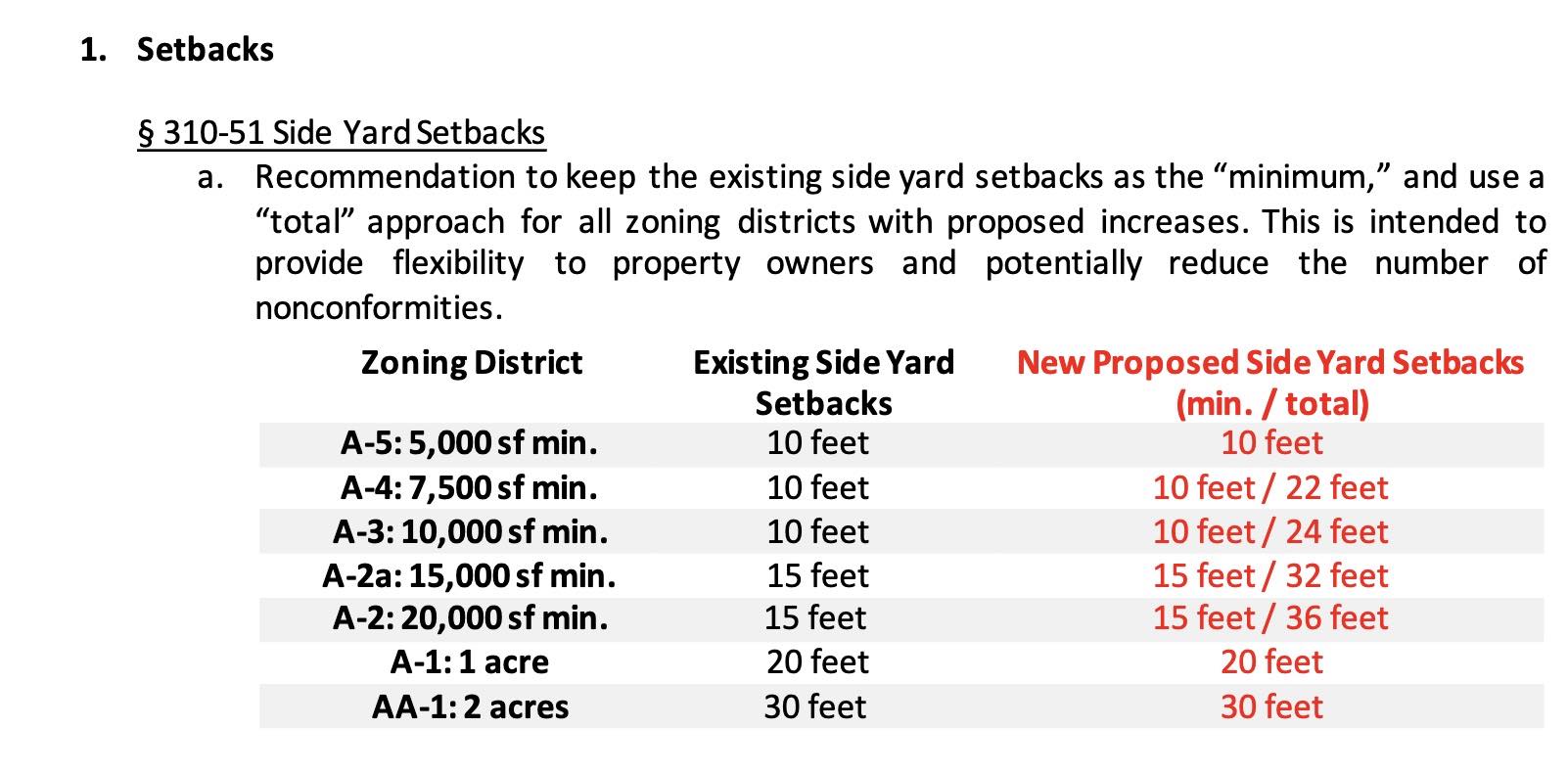Building Moratorium to Come to an End: Code Changes Enacted by Village Trustees
- Wednesday, 10 July 2024 13:20
- Last Updated: Thursday, 11 July 2024 21:28
- Published: Wednesday, 10 July 2024 13:20
- Joanne Wallenstein
- Hits: 3947
 When Scarsdale Mayor Justin Arest announced a proposal for the imposition of a six month building moratorium in November 2023, some cheered the plan while others said that a moratorium would cause “economic disaster and a reduction of property values.” The community was so divided that petitions for both sides were submitted with hundreds of signatures on both.
When Scarsdale Mayor Justin Arest announced a proposal for the imposition of a six month building moratorium in November 2023, some cheered the plan while others said that a moratorium would cause “economic disaster and a reduction of property values.” The community was so divided that petitions for both sides were submitted with hundreds of signatures on both.
Despite vociferous complaints from builders, architects and realtors, the moratorium went into effect in January 2024, putting a hold on new applications for demolitions, renovations and new construction. During the period any projects that were already in the pipeline were still reviewed by the appropriate land use committees, so many projects proceeded under Scarsdale’s existing building code.
The resolution that was passed at the time explained the reasons for the moratorium as follows:
“In recent years, the improvements, subdivisions and redevelopments occurring on single- family residential properties have created a number of pervasive adverse impacts, including but not limited to the loss of the architectural and historic qualities and scale that helps define the fabric of our residential neighborhoods as well as negative environmental impacts such as increased flooding, and the destruction of mature trees and natural habitats. These impacts are resulting from, among other things, the rapid pace of demolitions and replacement of older homes, additions being built on single-family properties, the construction of accessory structures, and the subdivision and redevelopment of residential lots. Such development activities create new impervious surfaces thereby diminishing the natural drainage and flood mitigation provided by mature trees and open space. Our natural resources are finite and fragile, and the Village’s infrastructure and other public resources are increasingly being tested by more frequent and severe storm events.
Moreover, new single-family developments are increasingly being built at the limits of our community’s minimum dimensional requirements for setbacks, while maximizing and, at times seeking variances to exceed the limits of floor area ratios, lot coverages, and other bulk requirements. This development trend also places greater challenges upon the Board of Architectural Review and Committee for Historic Preservation which are responsible for maintaining and preserving aesthetic and architectural resources.”
During the moratorium a subcommittee of Trustees and Village staffers worked with BFJ Planning Consultants to craft revisions to Scarsdale’s building code. They determined that they could address stormwater runoff and lot coverage first – but that they would need to hold off on any changes to historic preservation laws and design aesthetics given time constraints.
On July 9, they announced new provisions on site plan review, lot coverage, open space requirements, side yard setbacks, floor area ratio calculations and penalties that are designed to strengthen the review process for building applications, reduce the amount of lot coverage and impervious surfaces, reduce the disturbance of property, control stormwater run off during construction, effect minor changes to home size and setbacks and impose penalties on those who defy the law.
Pervious and Impervious Surfaces
One of the most discussed provisions of the new code is that gravel surfaces will no longer be considered as pervious – and  therefore, a gravel driveway will count in the calculation for lot coverage and could therefore reduce the size of other impervious surfaces including the footprint of the home, a patio or a pool. Homeowners can substitute pervious pavers – however they are more expensive.
therefore, a gravel driveway will count in the calculation for lot coverage and could therefore reduce the size of other impervious surfaces including the footprint of the home, a patio or a pool. Homeowners can substitute pervious pavers – however they are more expensive.
Trustees passed a SQRA resolution that asserts that the new laws will have no negative effects to the environment allowing the building moratorium to be lifted in a week’s time.
Discussing the changes, Mayor Justin Arest called the changes “incremental” and said they “will make positive differences. (The moratorium) has given us the ability to look at all of these things together. We have some additional tools – open space, sky plane. This was an incredible opportunity. I am proud of the process but there is still more work to be done. We will draft an FAQ about the new code and arrange training sessions with the Planning Board and the staff.”
He added, “There are things we didn’t touch – basements and attics and how they are calculated. We did not address historic preservation and aesthetics. Overall the bigger impact will be the review process. It will lead to better development and allow community members to be better heard.”
At a work session prior to the July 9 meeting trustees reviewed some final compromises on the new code. You can read the memo here:
Side yard Setbacks
On side yard setbacks they agreed to a “total approach” which provides for a minimum setback depending on zoning district and a total setback requirement for both sides to offer flexibility. Here are the new setback requirements:

Floor Area Ratio
The size of homes, or the Floor Area Ratio (FAR) will be scaled back by a slight increment. After considerable debate, trustees agreed to shave the FAR factor by just .005%. For example, a home on a 1/3 acre lot, 14,250 square feet, is currently permitted to be a maximum size of 4,350 square feet. (without the bonus). Under the new code, the maximum size would be 4,275 square feet.
Bonus
Another final change was to the bonus square footage permitted for increased setbacks. In zones A-4 to A-1, for each additional foot that a home is set back beyond the minimum side yard setback, an additional 100 square feet of floor area above the maximum is permitted. However in the A-5 district where some lots are only .11 acres, the 100 foot bonus is for each foot and a half beyond the minimum side yard setback to encourage more space between lots.
Though the moratorium and the code changes were controversial, few showed up to comment on Tuesday night.
Architect Roz Young asked how the new definition of gravel as impervious would help the Village. She said, “There will be no circular driveways, there will be front facing garages, swimming pools will no longer be possible. This poses a huge problem for me and my colleagues for creating gracious designs. What does this do for the Village – please give three or four examples.”
Frank Fish from BFJ Planning justified the decision saying, “Your own engineering department and other neighborhoods have found that gravel driveways are becoming impermeable. Porous pavers will be used to limit stormwater runoff. In Scarsdale you have had problems with flooding on residential sites. Porous pavers will reduce runoff.”
Sean Danahy of Nelson Road said, “Though the change in the FAR for the A5 district is just 25 square feet, we just added a second 25 square foot bathroom to our home.” He said if the new regulations are aimed at stopping developers, he asked for the Board to formalize the
possibility of receiving a variance for a renovation that would have been allowed under the old law. He said, “consider the law at the time people bought the house. It feels punitive to treat A5 differently than the rest of the town.”
Before the vote, the Mayor read comments from the trustees who were not able to attend the meeting.
Comments from the Trustees
Trustee Gans who was on the working committee that formulated the revisions said,"
I am proud of the work that the Board has done during the past six months and I support the Site Plan Review proposal, the decision to redefine impervious surfaces, the open space proposal, the side yard setback revisions and the slight reduction in the FAR incentive. However, I am disturbed by the decision to include BFJ’s new FAR proposal in tonight’s vote.
…Up until the Public Hearing on June 18th, BFJ said: “We recommend slightly decreasing the maximum FAR for lots with decimal points in the ten thousandths place. This would both simplify the FAR calculations, as well as slightly lower the maximum residential gross floor area permitted.” On June 18, when a member of the public showed that rounding could lead to unintended consequences, BFJ said they would “fix the formula.”
Instead, they have created an entirely new proposal, claiming it comes “in response to public comment and Board discussion we have also included.” If this was the case, BFJ had six months to propose something different. The Board has had zero opportunity to discuss this proposal before tonight. If we want a discussion on FAR, we should have it. The public has had less than a week to educate themselves on this new proposal, if they are aware of it at all. We all deserve the opportunity to be heard on this issue."
(Ultimately the Board agreed to the .005 FAR adjustment which Zoning Board Chair Jeff Watiker said was consistent with previous work.)
Trustee Brew said,"I am sorry that I am not able to be here this evening given the importance of both the work session and the vote on the new Land Use code. However, given our promise to do everything we could to not extend the six-month moratorium, this work had to be done tonight.
The Land Use Committee – the Mayor, Trustee Gans and I – together with Village staff have worked very hard to arrive at new Land Use policies which achieve our objective of reducing bulk and positively affecting stormwater management, while not infringing too much on home owners’ rights. During the moratorium we made significant progress towards those goals.
We have listened and adjusted based on feedback from our Land Use Boards and from the community. There are those who say we have gone too far and those who say we have not gone far enough. I have throughout the process been one to push to do more, as I maintain that the bulk that is being built throughout our community is changing both the look and the functioning of Scarsdale. I hope that the vote tonight includes the slightly larger reduction to FAR to better achieve our objectives going into this process. (She favored a .01 reducation in the FAR)
In any case, I support the proposed new local law and while it may not be going far enough it is a strong step in the right direction. My hope is that this Board and future Boards continue to monitor and evaluate land use in Scarsdale and make adjustments as needed.
Trustee Mazer said, "Since joining the Scarsdale Village Board over 2 years ago, by far the most common complaints I have heard from residents relate to the construction of large homes throughout our community. These newer homes alter the scale and character of the village, and contribute to our stormwater management challenges. I am so proud of my colleagues for agreeing to address this controversial topic.
Make no mistake, I am pro development. New housing stock and renovations are the lifeblood of our community. I also certainly support the rights of private homeowners to have flexibility and opportunity in designing their homes.
At the same time, however, I recognize that our community’s character is defined by the building that’s permitted. New housing needs to mesh with what’s already in place. Our neighborhoods need to maintain a level of consistency to sustain their charm. We cannot live in a community where it’s “every homeowner for him or herself”.
But striking the balance between the public’s interest and individual rights is exceedingly difficult. To that end, we engaged a consulting firm with deep experience in municipal land-use laws. We heard from our land-use boards. We consulted with our village professionals. We listened to the public’s comments.
The resulting recommendations are modest changes that should overtime improve Scarsdale’s landscape and drainage. Of course, for some these are too extreme, and for others too permissive. We have tried to find a reasonable balance that takes into account all the perspectives of our community. And as these revised codes take effect, we can together evaluate the results and decide if additional tweaks are warranted. It is with these sentiments that I support revising the codes."
Trustee Wise provided a quote from Warren Buffett who said, “Someone's sitting in the shade today because someone planted a tree a long time ago." He said, “We enjoy the beauty of the community and the changes we proposed will not stop the change. We are throwing sand in the gears. We are slowing things down…. We will do more to address flooding and the tree canopy.”
He said, “I applaud my fellow trustees for having the guts to take on this controversial issue.”
Trustee Ahuja said, “I support the changes but for different reasons. I am pro development. The country looks for a way to stop progress. We should look toward the future – at different types of housing, different ways of living. I spoke to people and there is interest in doing something sensible and smart. There is compromise everywhere. This is a great step in the right direction. I am excited to continue to iterate. I want to make sure we don’t sacrifice the future to hold on to the past.”
Deputy Mayor Gruenberg said, “I support the proposed changes. We gave our word that we would not exceed the six-month moratorium. We found a balance between making a difference and not making too many extreme changes. I want to thank the working group. However I am concerned about the A5 district. It should not be a hardship to have another child and add another bedroom and bath.”
The trustees who were present voted unanimously to adopt the code changes, closing an interesting six months in Scarsdale.
In addition to giving Trustees the time to analyze the code and craft new regulations, the pause did provide a temporary reprieve from a steady stream of teardowns that were a cause for distress among existing homeowners. For months, the Committee for Historic Preservation who approves home demolitions had nothing on their agenda.
And what of the feared reduction in property values? It proved to be totally unfounded, with the median sale price in Scarsdale now at $2,275,000 up $300,000 from June 2023.










